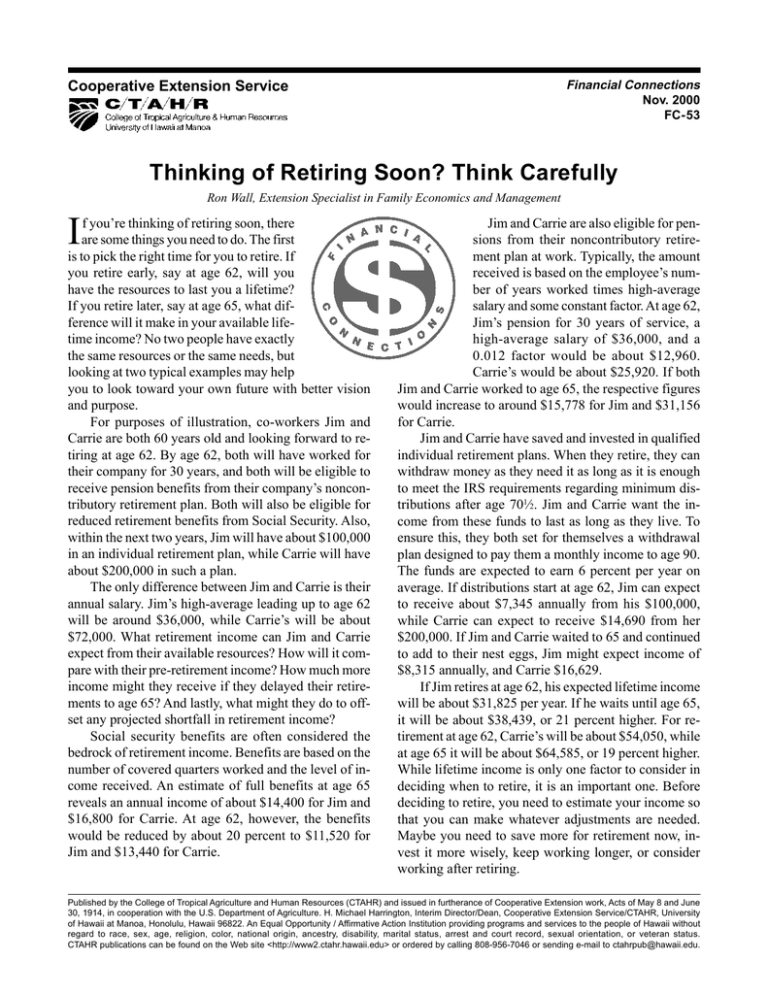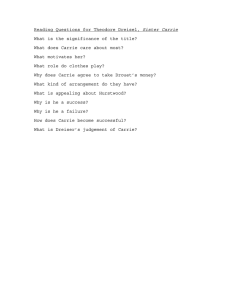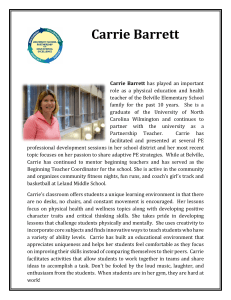Thinking of Retiring Soon? Think Carefully - ctahr
advertisement

Financial Connections Nov. 2000 FC-53 Cooperative Extension Service Thinking of Retiring Soon? Think Carefully Ron Wall, Extension Specialist in Family Economics and Management I f you’re thinking of retiring soon, there are some things you need to do. The first is to pick the right time for you to retire. If you retire early, say at age 62, will you have the resources to last you a lifetime? If you retire later, say at age 65, what dif­ ference will it make in your available life­ time income? No two people have exactly the same resources or the same needs, but looking at two typical examples may help you to look toward your own future with better vision and purpose. For purposes of illustration, co-workers Jim and Carrie are both 60 years old and looking forward to re­ tiring at age 62. By age 62, both will have worked for their company for 30 years, and both will be eligible to receive pension benefits from their company’s noncon­ tributory retirement plan. Both will also be eligible for reduced retirement benefits from Social Security. Also, within the next two years, Jim will have about $100,000 in an individual retirement plan, while Carrie will have about $200,000 in such a plan. The only difference between Jim and Carrie is their annual salary. Jim’s high-average leading up to age 62 will be around $36,000, while Carrie’s will be about $72,000. What retirement income can Jim and Carrie expect from their available resources? How will it com­ pare with their pre-retirement income? How much more income might they receive if they delayed their retire­ ments to age 65? And lastly, what might they do to off­ set any projected shortfall in retirement income? Social security benefits are often considered the bedrock of retirement income. Benefits are based on the number of covered quarters worked and the level of in­ come received. An estimate of full benefits at age 65 reveals an annual income of about $14,400 for Jim and $16,800 for Carrie. At age 62, however, the benefits would be reduced by about 20 percent to $11,520 for Jim and $13,440 for Carrie. Jim and Carrie are also eligible for pen­ sions from their noncontributory retire­ ment plan at work. Typically, the amount received is based on the employee’s num­ ber of years worked times high-average salary and some constant factor. At age 62, Jim’s pension for 30 years of service, a high-average salary of $36,000, and a 0.012 factor would be about $12,960. Carrie’s would be about $25,920. If both Jim and Carrie worked to age 65, the respective figures would increase to around $15,778 for Jim and $31,156 for Carrie. Jim and Carrie have saved and invested in qualified individual retirement plans. When they retire, they can withdraw money as they need it as long as it is enough to meet the IRS requirements regarding minimum dis­ tributions after age 701⁄2. Jim and Carrie want the in­ come from these funds to last as long as they live. To ensure this, they both set for themselves a withdrawal plan designed to pay them a monthly income to age 90. The funds are expected to earn 6 percent per year on average. If distributions start at age 62, Jim can expect to receive about $7,345 annually from his $100,000, while Carrie can expect to receive $14,690 from her $200,000. If Jim and Carrie waited to 65 and continued to add to their nest eggs, Jim might expect income of $8,315 annually, and Carrie $16,629. If Jim retires at age 62, his expected lifetime income will be about $31,825 per year. If he waits until age 65, it will be about $38,439, or 21 percent higher. For re­ tirement at age 62, Carrie’s will be about $54,050, while at age 65 it will be about $64,585, or 19 percent higher. While lifetime income is only one factor to consider in deciding when to retire, it is an important one. Before deciding to retire, you need to estimate your income so that you can make whatever adjustments are needed. Maybe you need to save more for retirement now, in­ vest it more wisely, keep working longer, or consider working after retiring. Published by the College of Tropical Agriculture and Human Resources (CTAHR) and issued in furtherance of Cooperative Extension work, Acts of May 8 and June 30, 1914, in cooperation with the U.S. Department of Agriculture. H. Michael Harrington, Interim Director/Dean, Cooperative Extension Service/CTAHR, University of Hawaii at Manoa, Honolulu, Hawaii 96822. An Equal Opportunity / Affirmative Action Institution providing programs and services to the people of Hawaii without regard to race, sex, age, religion, color, national origin, ancestry, disability, marital status, arrest and court record, sexual orientation, or veteran status. CTAHR publications can be found on the Web site <http://www2.ctahr.hawaii.edu> or ordered by calling 808-956-7046 or sending e-mail to ctahrpub@hawaii.edu.



